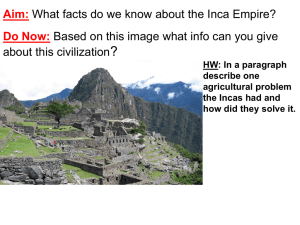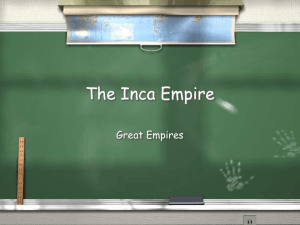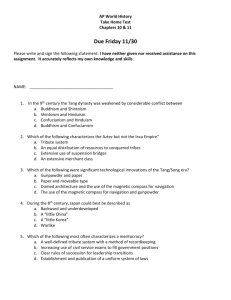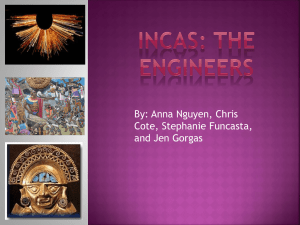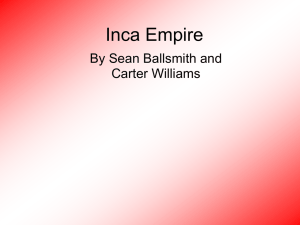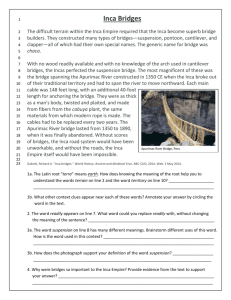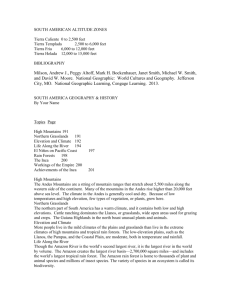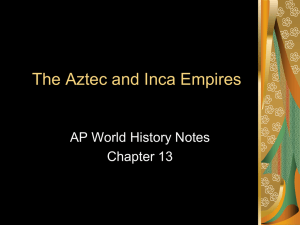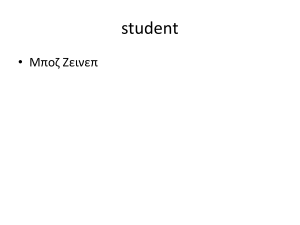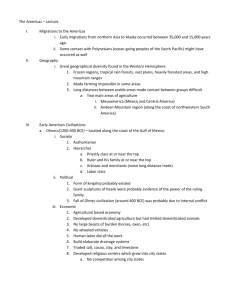Incas: Lord of the mountains
advertisement
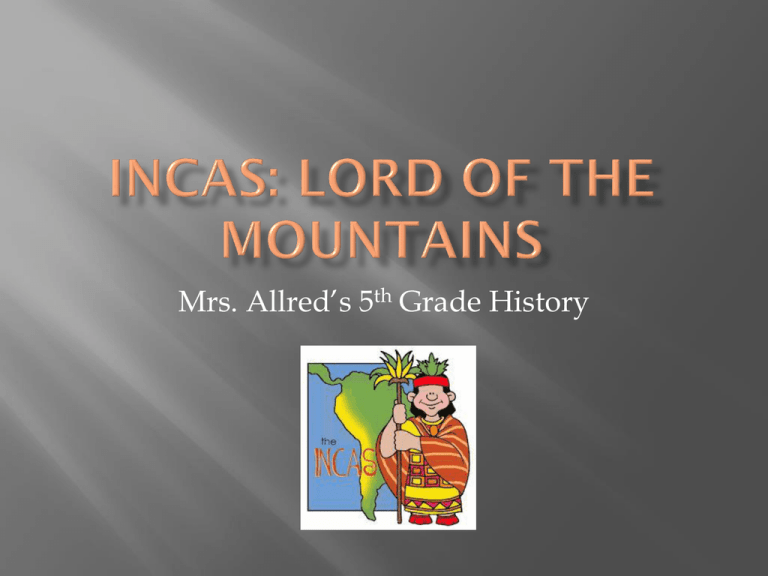
Mrs. Allred’s 5th Grade History It is the year 1500. You are standing in a crowd of people. You look down the road and see a golden litter carried on the shoulders of four men. People start to bow and touch their foreheads to the ground. Several people start to yell at you and soldiers begin to chase you with clubs. Suddenly, you wake up… The people in the dream were bowing to the Sapa Inca (King of the Inca people). No one was allowed to look at this powerful king. If you had not woken up in time, you would probably have been killed by the soldiers for disrespecting the Son of the Sun. Built a great civilization on the western coast of South America. First people lived around Cuzco in modern-day Peru. Began conquering neighboring lands and extending their empire in 1400s. By 1530’s, the Inca Empire was the largest in the Americas – even larger than the Aztec Empire had been (12 mil people). Inca territory stretched for more than 2,000 miles. Arid plains along the western coastline. Some of the driest deserts in the world. Snow-capped Andes Mountains. Thick jungles where heavy rains feed the mighty Amazon River. Four types of lands that made up the Inca Empire were… desert, mountains, plains, and jungles. The Sapa Inca ruled with absolute power. Many government officials traveled throughout the empire to make sure his laws were obeyed. The Sapa Inca was… king of the Inca people and he ruled with absolute power. One official was known as He-Who-Sees-Everything. He was responsible for visiting Inca villages and making them pay taxes. He also served as a matchmaker. He lined up the villagers and asked all of the unmarried girls of marriageable age to step forward. He interviewed each of them, chose those who were especially worthy for the Sapa Inca, and paired the rest off with all the unmarried young men. Organized in tribal groups or clans Each clan farmed a piece of land. Families lived in windowless one-room stone huts. Burned dried animal waste as fuel. Families slept together on animal skins spread on the bare floor. Boys followed their fathers’ trade. Girls copied their mothers’. Farming was how most Incas supported themselves. Corn, squash, tomatoes, peanuts, cotton, and more than 100 varieties of potatoes. Farmers raised guinea pigs for eating and alpacas for wool. Llamas were used for all sorts of things, but especially as pack animals. Cousin of the camel About 4 feet high and 250 pounds. Greater strength and endurance than most other animals. Can carry a load of 100150 pounds for 15-20 miles. Wool, transporting goods, food (charqui- jerky) Families worked for themselves, but part of their time was spent raising crops for the empire. Inca men also had to donate time by working on construction projects building roads, or serving in the military. The Sapa Inca and priests only used a small part of the goods produced. The rest was stored in warehouses and distributed to those who were too old or too sick to work. Given to people in times of need. They were allowed to keep some and the rest was given to the Sapa Inca to share with the Empire. Like the Aztecs, the Incas built their empire by conquering other people. Boys were taught that being a man meant being a warrior. They were trained to be soldiers. Some human sacrifices, but less than the Maya and Aztec people. Tried to have conquered people become loyal subjects rather than sacrificed offerings to the gods. Both of them valued the military, trained men to be soldiers, and used warfare to build their empires.

